Benoît Debie about The Dancer
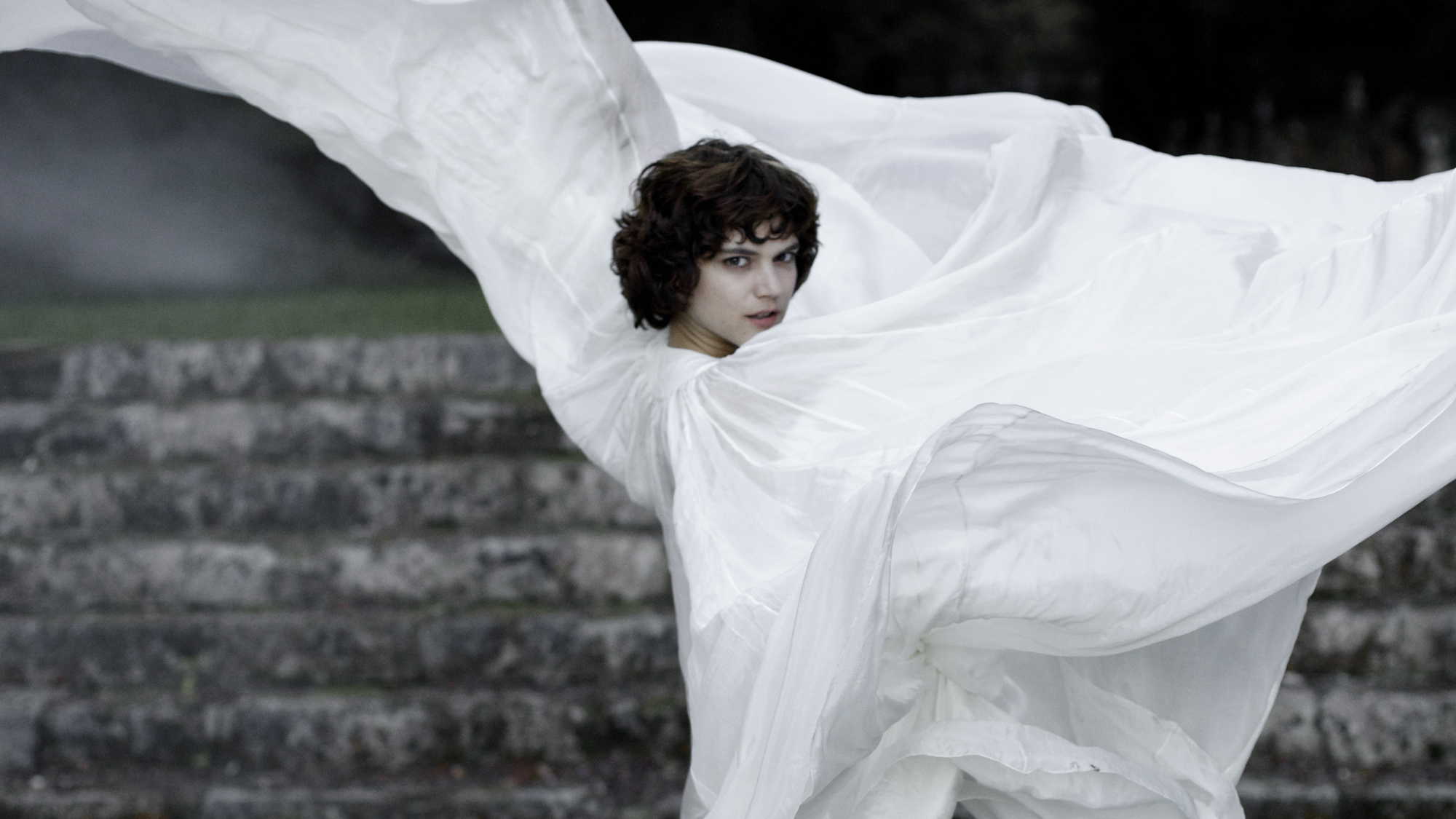
The Dancer by Stéphanie Di Giusto, cinematography by Benoît Debie, SBC/AFC.
Synopsis : Loïe Fuller was the toast of the Folies Bergères at the turn of the 20th century and an inspiration for Toulouse-Lautrec and the Lumière Brothers. The film revolves around her complicated relationship with protégé and rival Isadora Duncan.
Principal cast : Soko, Lily-Rose Melody Depp, Mélanie Thierry, Gaspard Ulliel, William Houston and François Damiens
Language : French
Production companies : Les films du fleuve, Les productions du Trésor, Sirena Film
Release date : September 2016
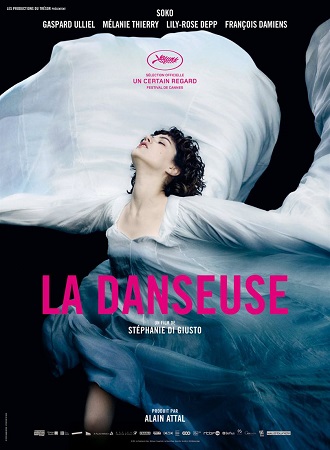
Even though you are no stranger, could you present yourself and your work in a few words ?
BD : I attended the IAD. Afterwards, I had some experience as a camera assistant, but it wasn’t my thing. But as you might know, it’s really hard to become a DOP when you are just getting out of school. I was lucky enough to be recruited by the RLT-TVI broadcast television channel, while they became independent. After ten years working for them, I started to do short films, commercials, music videos, in order to get closer to my goal of doing features. I was lucky enough to meet Gaspard Noé when he was prepping Irréversible. It was my first long-length film. The film was controversial, it was seen, criticized, enjoyed. Which enabled me to do a second one, because, to tell the truth, it’s not because one does its first long-length film, that one necessarily does a second one. It’s a matter of chance too. One thing led to another and I though that it was time for me to stop doing TV programs and try my luck in movies.
Let’s talk about the Dancer. How did you come to work on this project ?
BD : I met Stephanie, the director, almost three years ago in LA. She was there to cast some actors. She wanted me to do the film at all cost. It was almost an obsession. I had read the script that I found to be beautiful. Moreover the subject interested me because it was a period movie, but with a modern visual. In spite of everything I though it was very ambitious for a first film. By reading the script, I estimated the project at seventeen to twenty million. I though that for a first film she would never get that much. And because of that she wouldn’t be able to do what she wanted. She did take some time to finance it, but she finally managed to do so quite fast towards the project’s ambition. It’s very hard, in the current economy, for a first film to get only one million. And she did it, even though it was not seventeen to twentymillion, it was a real nice budget for a first film. Stephanie’s strength is that she never lets go, because she has quite a temper.
Earlier, you said something about modernity in a period movie, what did you mean by that ?
BD : The film takes place in the beginning of the twentieth century, which interested me very much, because it’s a genre that I never did before. But mostly because Loïe Fuller was kind of cutting-edge at that time. She was very committed to the visual of her dances. She danced with fabric items and drapes, she created by herself phosphor powders to illuminate her body and she even invented a spotlight system to light her dress by transparency. I really like the idea of making a period film with more modern technics. My only fear was that the choreographies would be to advanced in the film in comparison to the time period. So we were very careful with that. But we allowed ourselves to try things and I find the film to have great visuals.
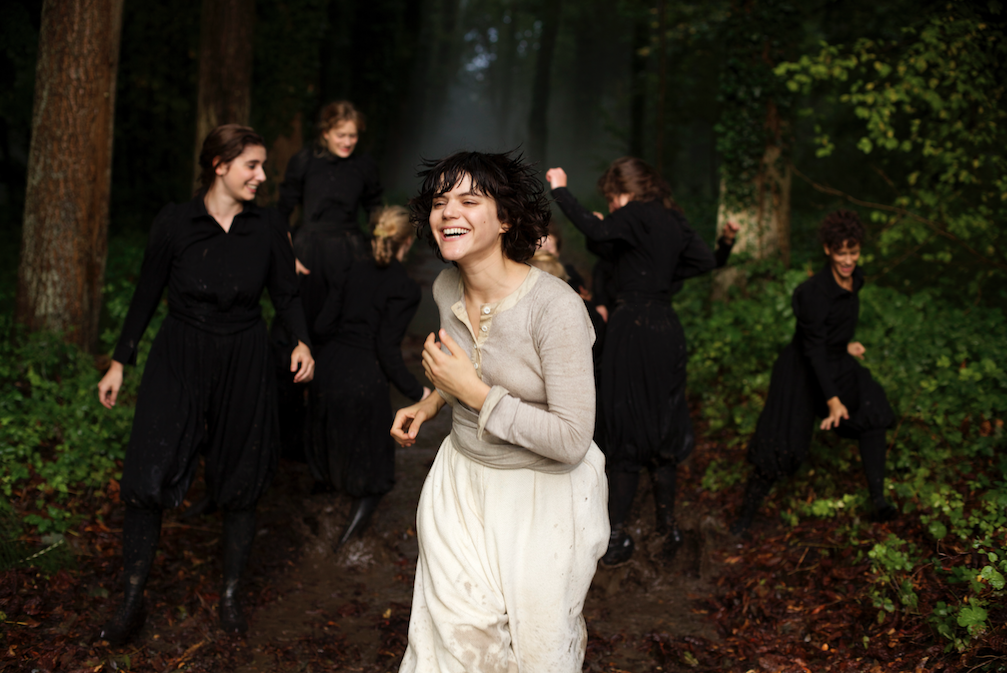
Did you have any references ?
BD : I don’t think that I really looked for references. I wanted to create my own world. Obviously we watched what Loïe Fuller was doing back then. It was our “main reference”. I was very interested in the sources she used to light her fabrics. Obviously we didn’t use the same source, but it was our main reference. For the period scenes, I wasn’t going to make a classic image like one can see all over in movies and on tv, I wanted to do a more modern image, while respecting some rules.
Did you have to solve any specific difficulties ?
BD : We shot on digital, even though I was against it at first. When I accepted the film, the producer agreed to do it on film. But of course when we started the prep, it was no longer possible. I think it wasn’t only a matter of budget, people today, I don’t know why, are frightened by film. Even though the movie is beautiful, I think that shot on film, it would have even more beautiful. Digital belongs to the new generation and that’s it. In fact, using digital enabled me to experiment differently. I have done a lot of films on digital, but always a bit particular, for example in 3D, with Gaspard Noé and Wim Wenders. It was the first time I did a “classic” film on digital. For this movie, I wanted to destroy the digital image in order to make it look as much as possible like film, to give it organicity. That’s why we searched for particular lenses, that we chose to get a more textured look out of the camera. I think it worked out really well. I see the differences because I know what to look for, but I don’t think the viewer can.
What camera and lenses did you use ?
BD : In fact we tried almost all existing cameras and lenses. (Laughter). Finally I have chosen an Alexa XT because we wanted to shoot in anamorphic and because, in my opinion, this camera is closer to a film look.
Regarding the lenses, I had them build. It’s a mix between Lomo and Zeiss. It’s really a beautiful set. The lenses are far from perfect, but it’s what I like. Today, I find modern lenses to be too perfect : everything is sharp and clean. In fact, the idea of building these lenses came while shooting Spring Breakers. At that time, I bought an old Lomo lens in Russia that opened at 1,4 and I did some scenes with it (the rest was shot with Cooke S5 lenses) and I found it to be very nice. But Spring Breakers was shot in film. After that I did some experiments with this LOMO lenses on commercials shot digitally and I thought to myself that it would be best to build lenses for myself because I couldn’t find a set that I liked. I had a set of four optics made, mixing different element of lenses. It’s a work in progress, I am still improving them as I shoot new films. On the Dancer, at first we chose a Panavision G set. I took my set along as an extra set, but I didn’t think I was about to do the entire movie with it. But the more I started to prep, the more I thought to myself that these lenses were so beautiful that I couldn’t find a good reason to do a clean and sharp film instead. Finally we did the entire film with this set. It’s really beautiful, but a bit particular. It’s a real bias. I don’t think these kind of lenses are suitable for any kind of film.
Earlier you said that you push the camera. What ASA did you use ?
BD : We did tests and I have chosen to push it at 2000 ASA. The lab would call almost every day to tell me to look out for the noise and to keep a margin in the shadows. But it was exactly what I liked. In fact, I am still exposing the digital image like was doing so on film. A lot of people expose a digital image in order to have information from the shadows to the highlights and finally everything is flat. DIT and labs always push me to retain options for later, but for me it doesn’t make sense : when I have decided tocrush the blacks on set, I won’t regret it in grading ! The best way to destroy the digital image today it’s to treat it like sensitive film.
For how long did you shoot and where ?
BD : The film was shot quite fast. I had five weeks of prep. We shot from September to mid-December 2015. Stephanie had to edit it quite fast because the film had a shot at being selected in Cannes. We shot mostly in France : in Paris, in a theater in Vichy, in the Fontainebleau Castle… We also did a week in Prague. Finally, we shot the beginning of the film, that is supposed to take place in the Far West in the script, in the Alps. We should have shot in Texas, but the budget was too limited and finally we found some really beautiful locations.
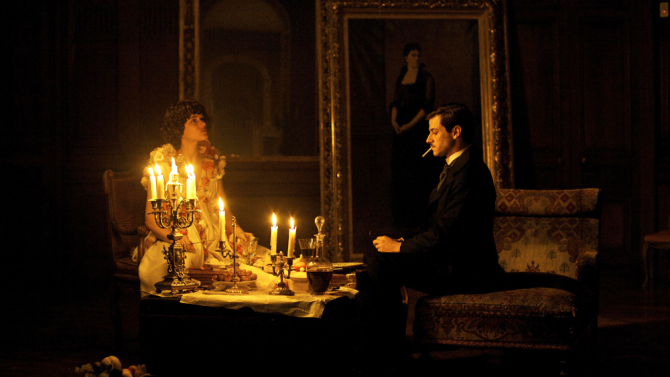
How about the lighting ?
BD : Obviously I wasn’t going to use my usual particular flashy sources like on Enter the void or Spring Breakers. It would not have been right for a period film. Usually, I work with very little, I do not light that much. But in this case we were shooting in some spacious locations, castles etc. As I wanted a relatively natural light, but still distinguished, and as I wanted to keep my way of lighting from the outside to the inside, I had to resort to much bigger means : cranes, big sources, etc.
How about the show sequences ?
BD : We used moving heads. We wanted to light the fabric items from below and above to create transparency. For that we used projectors that enabled us to change the colors while shooting, to flash etc…
In spite of the budget, did you get every source that you wished for ?
BD : Negotiations are part of the job. But I would say that altogether I was able to get everything I asked for, besides film. But, like I said, it was also a director’s choice. As it was her first film, I think that Stephanie wanted to keep maximum control over her pictures, to preserve some liberty in the directing, and I get that. I have had experiences shooting 35mm with a director that never had shot on film before, for instance on the last Rihanna’s clip, and it was really hard to handle, because of the schedule, the rigor demanded on set is quite different. Finally on that video I ended up cornering myself. That’s why I know that even tough aesthetically the Dancer would have been more beautiful on 35mm, for real, it would have harm the director and by consequence the film.
Did you do your own operating ? What kind of grip did you use ?
BD : I always operate myself. We did a little bit of everything : dolly, shoulder, stead… We mixed different styles, while keeping the same aesthetic within a sequence.
For a first film, the cast is quite important, how did the work with the actors go ?
BD : There were Soko, the main actress, who basically is more a singer, but I still think she is very good in the film, and Gaspard Ulliel, the male lead. But also Lily-Rose Depp who was doing her first film (actually she was shooting her two first feature films in parallel). She had a smaller role, but she was very nice too and very photogenic. And then there were François Damiens and Mélanie Thierry who came on and off. But everything went well.
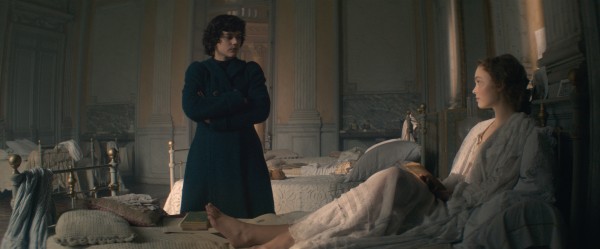
As it was a period film, the collaboration with the other departments, costume and set design for instance, must have been quite important, Am I right ?
BD : Yes, you’re right. I really enjoyed it. I was working with Carlos Conti for the first time, a truly interesting art director. He did a lot of films that I actually liked, so I was really pleased to work with him. More over because for me the set does the light. It’s obviously a lot easier to do nice lighting in a beautiful set. The prop guys were also very good, there was a true search in that area, because if you think about it, the actual work for the art department was to accessorize and to arrange the Castle. The costume too were very nice. It really was a nice collaboration.
Given what you said earlier, I suppose you don’t work with a DIT ?
BD : In fact, I work more like on film : I expose the camera using a lightmeter on set as I want it to be and then I will use the grading to improve upon it, but I find it useless to pre-grade on set. Generally one uses a LUT and when looking at it two days later finding it to be ugly. I prefer working with a classic LUT like a REC709 and if I am in doubt I look at the RAW and that’s it. On the Dancer, we would send the rushes to Technicolor in Paris where a grader would do a first pass off the rushes. But it was a professional with the appropriate grading-machines etc, because on set unless you have a really good DIT, it’s never right.
How did the postproduction go ?
DB : For the grading it was a bit special, as I started Wim Wenders’s film in February and as they had to do the grading very fast in time for Cannes, they were forced to grade partly without me, even though I managed to be released two week-ends during the shoot to take a quick look. But then I was in touch with the colorist. And Stephanie really has a good taste so I trusted her. The advantage of my way of working is that the choices have already been made during the shoot. In the same way that on film nobody would have exposed in order to capture all possible latitude. You must use the tool to get the desired texture, and not use it like engineers recommended it on paper.
We might make some grading amendments before its release whenever Wim Wenders’s film is over. The grading was almost accomplished, but I would like to add some grain(s) to increase its texture appearance.
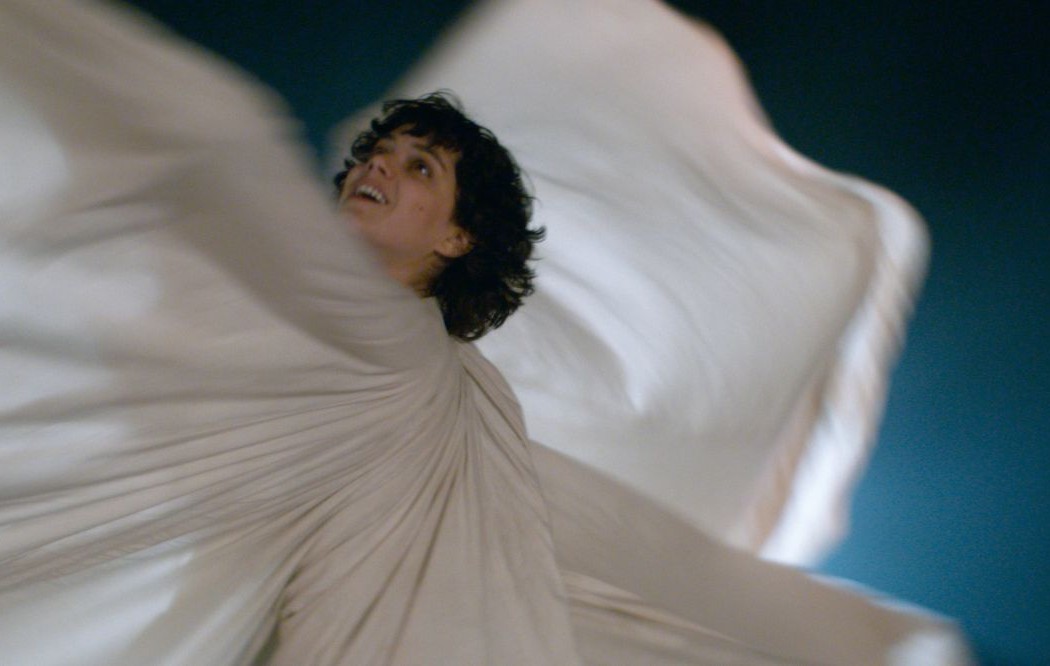
Crew :
1st Assistant camera : Lazare Pedron
Gaffer : Thierry Labille
Grip : Vincent Blasco
Steadicam operator : Jan Rubens, Olivier Merckx
Color grader : Fabien Pascal
Technical material :
Camera : Alexa XT and Panavision G from Paris Panavision, Benoît Debie’s Lomo-Zeiss lenses
Light and grip : TSF
Lab : Technicolor
